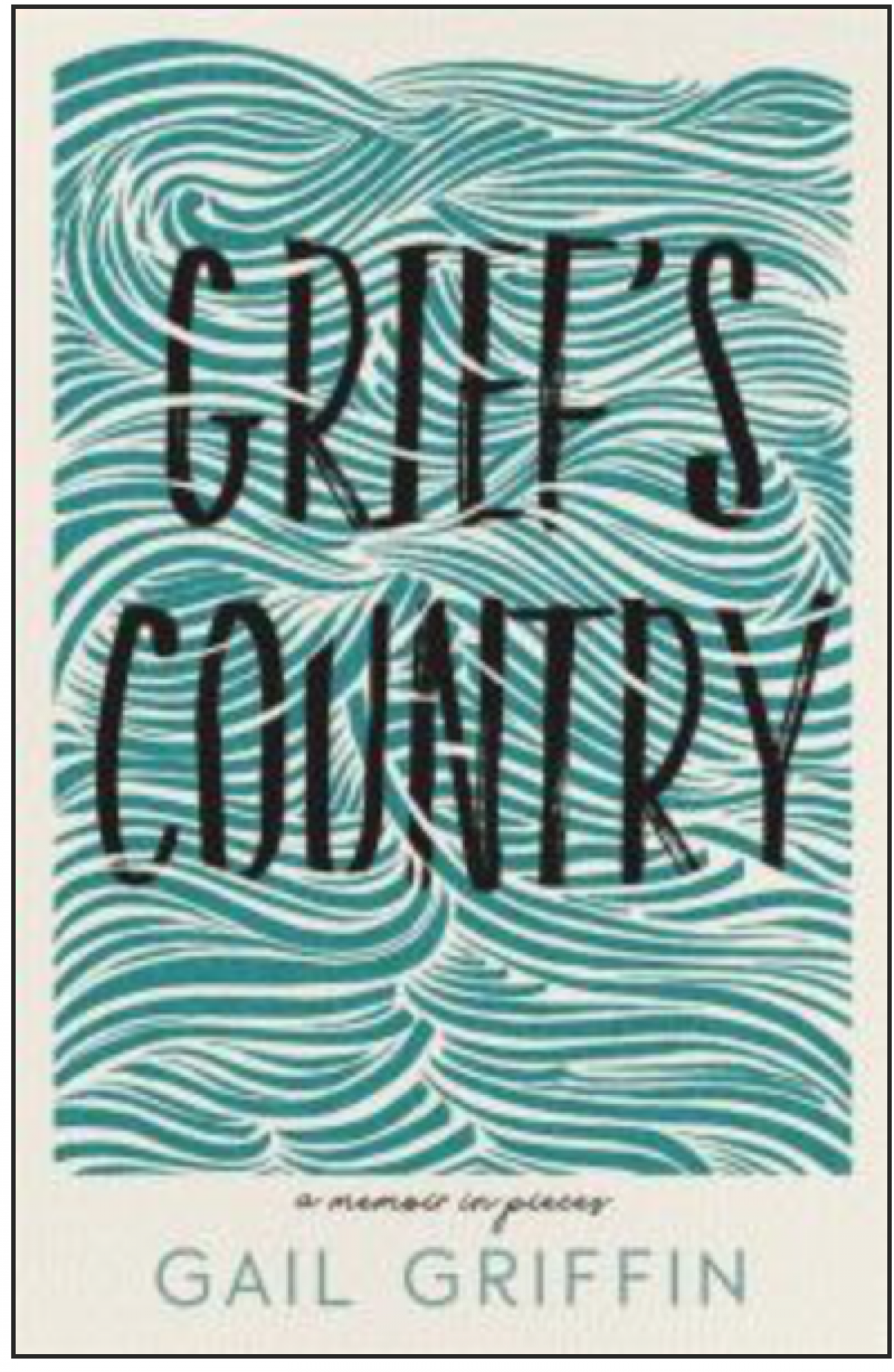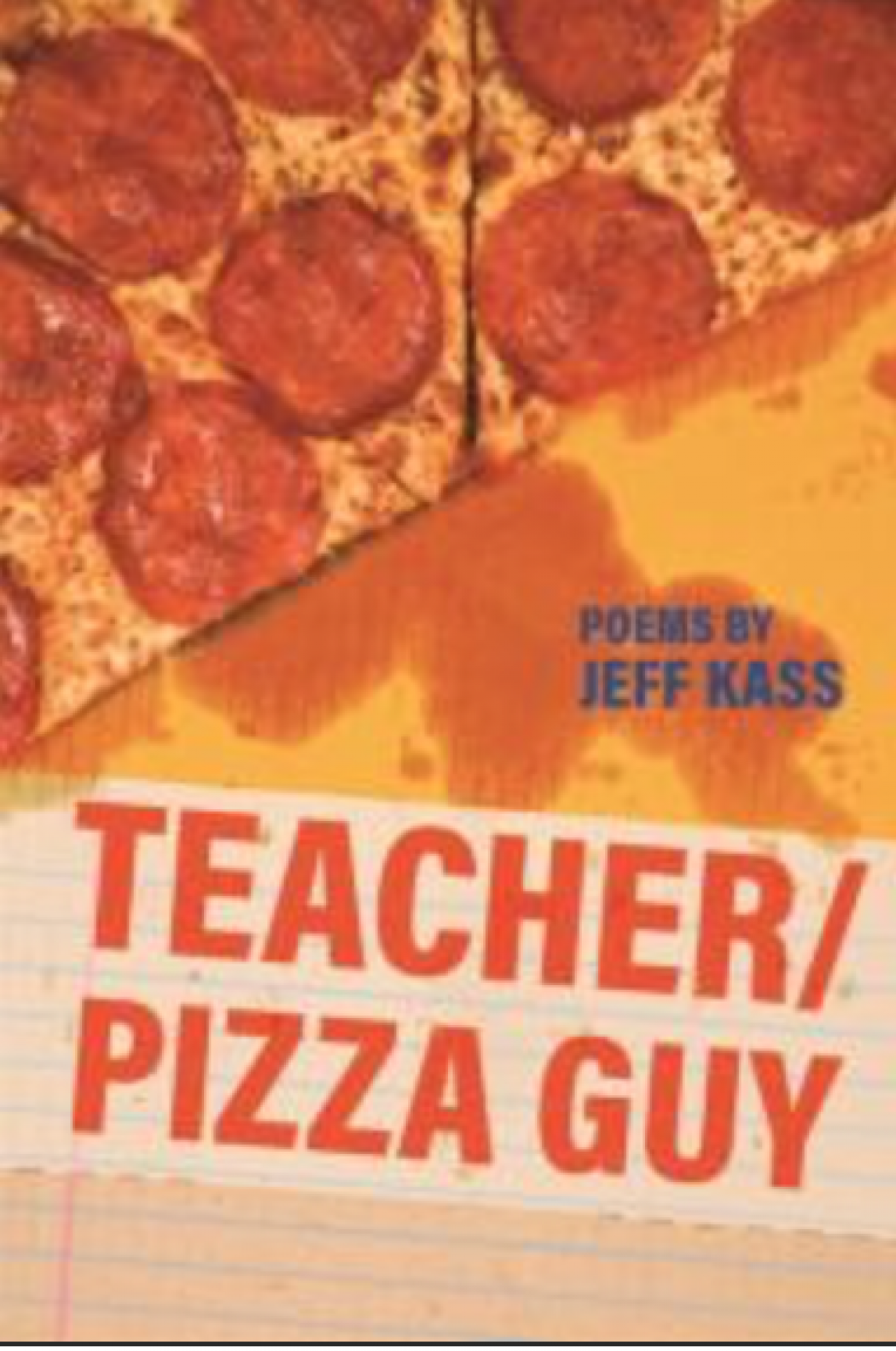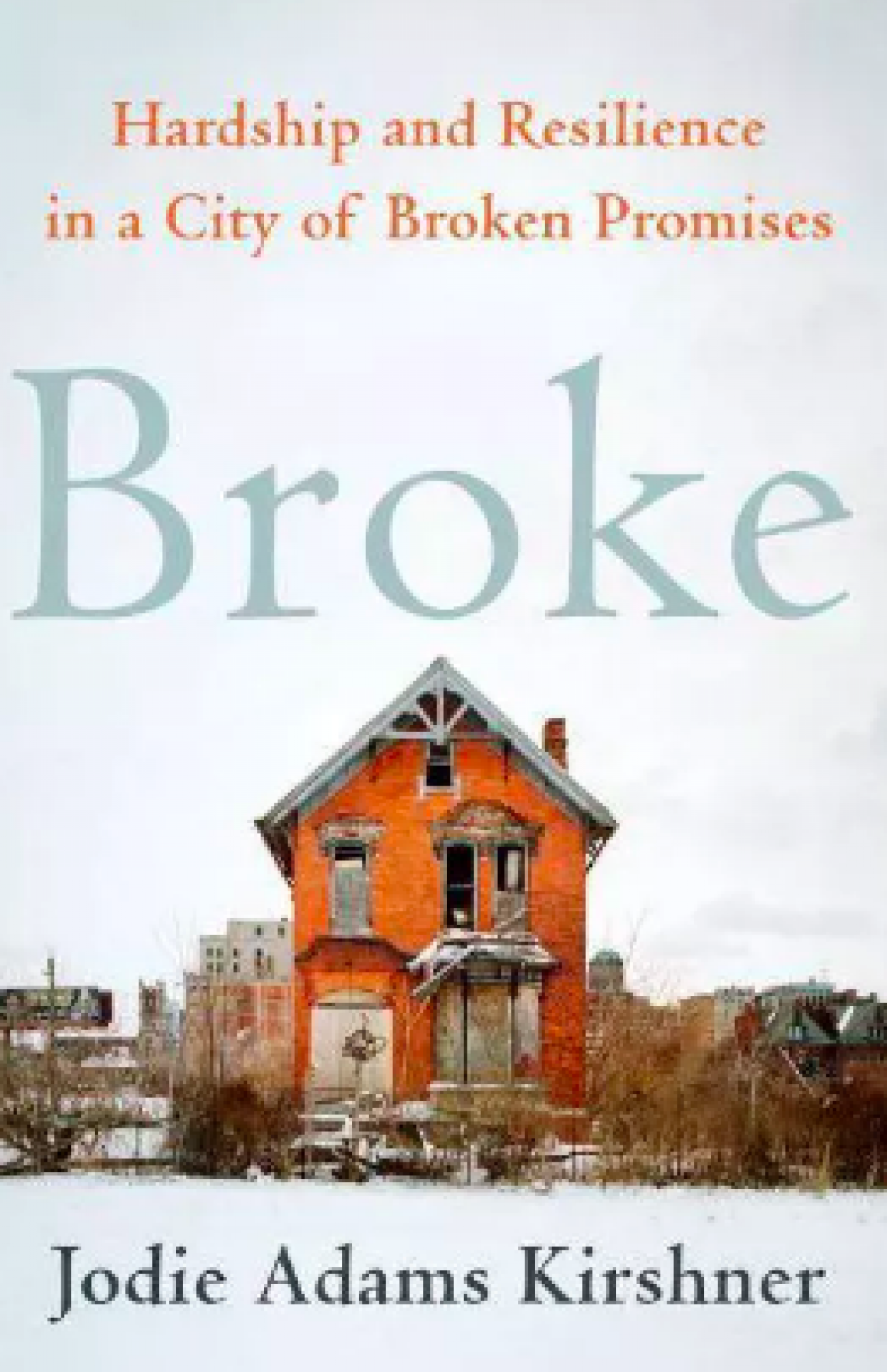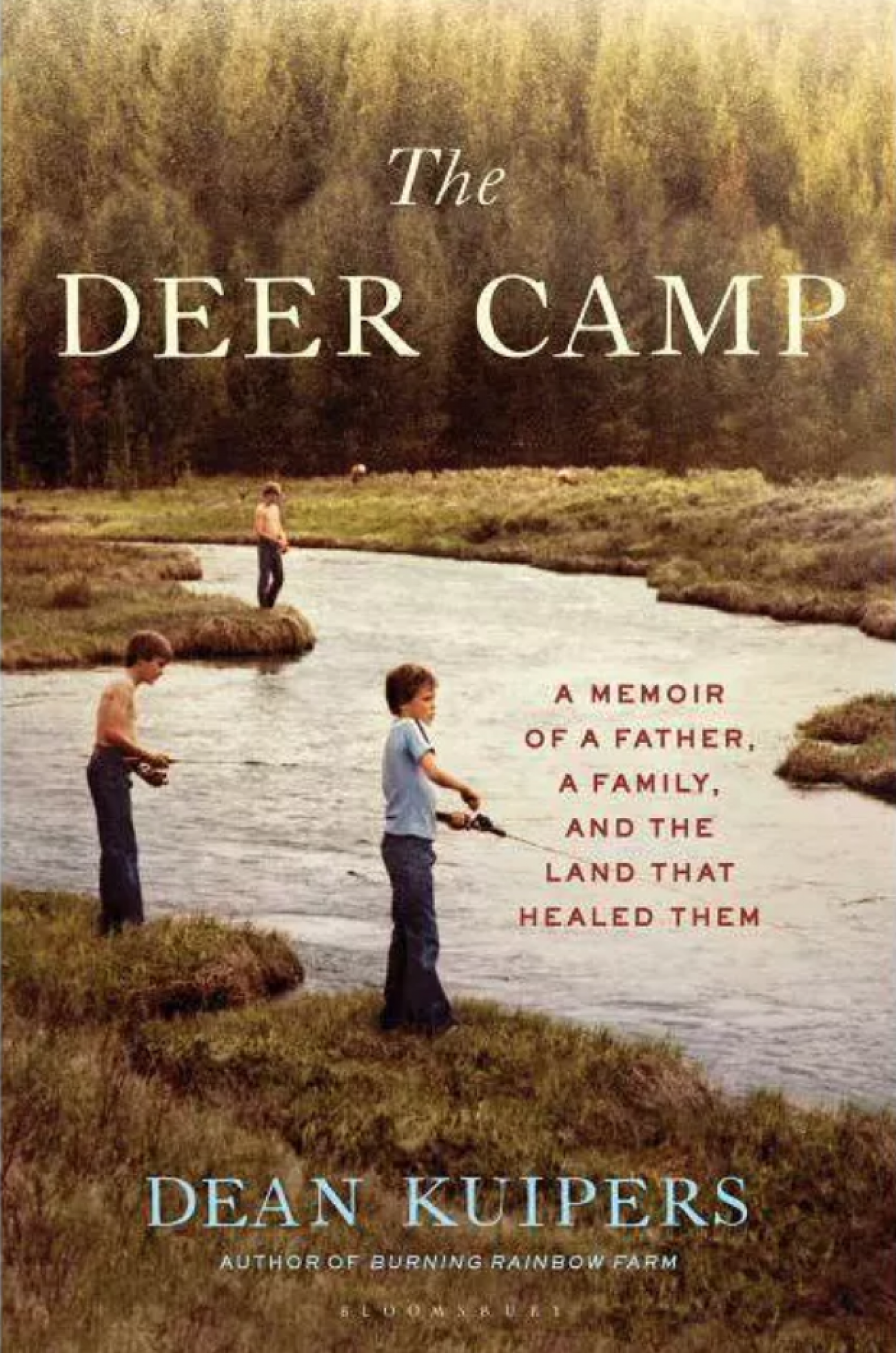13 Michigan books to get you through the stay-at-home order

The stay-at-home orders have undoubtedly left many Michiganders antsy. But the dramatic break in routine may leave some with extra time on their hands, and others with a desire to escape reality.
Now might be a good time to dig into a book on Michigan. From eerily familiar stories on pandemics to a children’s book on Lake Michigan and memoirs on healing, here are 13 books to read while you stay home.
Related: See what Bridge readers selected for our first Michigan book club pick
Related: Bridge is starting a Michigan book club to counter the quarantine blues
Most can be purchased directly from the publisher, or downloaded from a Michigan library system to an e-reader or smartphone via Overdrive or Libby. Many also can be ordered from a local bookstore, which may offer curbside pickup.
NONFICTION
“Grief’s Country: A Memoir in Pieces,” by Gail Griffin
Gail Griffin had been married just four months and eight days in 2008 when her husband’s body was found in the Manistee River outside

of their cabin on Fife Lake. It was a shocking death for Griffin, a retired Kalamazoo College professor who maintained a quiet long-distance relationship with her beloved Bob for 18 years before they were finally able to tie the knot.
After Bob’s fatal fall in the river, one of the first things Griffin thought was to write about her grief, perhaps to make sense of it all. It took eight years before her various essays evolved into this memoir, which was recently released.
The first few of the book’s essays focus on their relationship and the days and weeks immediately after his death. She’s fiercely honest about her grief, which may invoke tears for some. The latter essays are a bit lighter and there’s even humor interspersed throughout, particularly when she visits Graceland. The book will resonate with someone who’s grieving or knows someone who’s lost a loved one. (Wayne State University Press, 144 pp.)
Teacher/Pizza Guy,” by Jeff Kass
In the 2016-17 academic year, Jeff Kass taught English and creative writing full time at an Ann Arbor public high school, served as a part-

time director for a literary arts organization and delivered pizza a few nights a week, all to make ends meet. He chronicles some of that year he was 50 in a collection of honest, and sometimes humorous, autobiographical poems. Kass is also political without distracting from the poems themselves . Rather, he rather adds layers and nuances while advocating for the middle class and for educators.
Kass’s prose will resonate with those who attempt to start something new when their life is half over, even if they aren’t big lovers of poetry. Some of my favorites are when he writes about his vulnerability as he navigates his multiple roles, or addresses those who order pizza at 2 or 3 a.m. (Wayne State University Press, 81 pp.)
All WSU Press titles, including TEACHER/PIZZA GUY and GRIEF'S COUNTRY are 40 percent off and free domestic shipping when you use code READ at checkout
“Cheers to Michigan: A Celebration of Culture and Craft Distillers,” by Tammy Coxen and Lester Graham

“Cheers to Michigan” is the perfect resource to have handy for that first post-pandemic dinner or cocktail party, or for a night of quarantine. The book, a compilation of drinks, is a toast itself to cocktail culture in the Mitten state and the state’s flourishing craft-cocktail scene. The authors curate 45 drinks, both classic and trendy, that celebrate the state’s culture, people, history, significant dates and its seasonal weather. They even include a list of Michigan distillers and products.
There are recipes for drinks made for the North American International Auto Show, Groundhog Day, Oberon Day and International Women’s Day. Since it’s still spring and there’s a stay-at-home order, readers might want to try their hands at the Lovers’ Quarrel, courtesy of Rob Hanks at Reserve Wine & Food in downtown Grand Rapids, or an apple-based cocktail, just because it’s Michigan. (University of Michigan Press, 101 pp.)
You can use coupon code UMGLCHEERS20 to save 20 percent off the book on the website
“In Hoffa’s Shadow: A Stepfather, a Disappearance in Detroit, and My Search for the Truth,” by Jack Goldsmith

Jimmy Hoffa, head of the International Brotherhood of Teamsters from 1957-71, was the best known and most powerful labor leader in the nation. He was also a mobster, which likely led to his disappearance on July 30, 1975, in Bloomfield Township.
Charles “Chuckie” O’Brien, the author’s stepfather, was Hoffa’s right-hand man and was arrested for his suspected involvement with Hoffa's disappearance. This book, released simultaneously with the debut of the film “The Irishman,” brilliantly rebuts the widely held beliefs that Chuckie O’Brien drove Hoffa to his death. Jack Goldsmith, an assistant attorney general in George W. Bush’s administration, packs a lot into 354 pages. In a painstaking reconstruction of one of the greatest unsolved mysteries in American history, Goldsmith interviews four FBI agents involved in the case and reviews the volumes of wiretap transcripts, FBI files and grand jury evidence. The book is not just an attempt to exonerate his stepfather, but it’s a chronicle of O’Brien’s relationships with both Hoffa and Goldsmith. It’s also an examination of the U.S. labor movement, American surveillance history, the mob, and the blue-collar Midwest. (Farrar, Straus and Giroux, 354 pp.)
“Detroit’s Birwood Wall: Hatred and Healing in the West Eight Mile Community” by Gerald Van Dusen

The neighborhood around Eight Mile between Mendota and Birwood streets in Detroit was a redlined black neighborhood for nearly a decade until the early 1940s, when developers looked to build a subdivision nearby for white residents. To gain U.S. government approval and financing, the developers constructed a half-mile-long wall that stretched a full three blocks, designed to keep black neighbors on the other side. The 6-foot-tall Birwood Wall, Wailing Wall, or Detroit’s Berlin Wall, as locals call it, still stands (it’s now a colorful mural) as a sign of segregation and a reminder of the 20 years of racial divisiveness.
The wall has gotten renewed attention lately. U.S. Sen. Elizabeth Warren unveiled a campaign proposal in front of it and the Michigan State Historic Preservation Office is currently lobbying to get listed on the National Register of Historic Places. Through personal interviews, family histories, land records and other archival sources, the author, a professor of English at Wayne County Community College, tells the story of the wall and its surrounding enclave that now is a colorful expression of hope. (The History Press, 194 pp.)
“Broke: Hardship and Resilience in a City of Broken Promises” by Jodie Adams Kirshner

Released last fall, “Broke” is a narrative of a Michigan city metropolis running out of cash and the aftermath of its financial decline, told through the lives of seven residents. Some are lifelong Detroiters, others are newcomers attracted to the city’s spirit and resilient hopes of a renaissance. One Detroit resident battles prostitution and dumping on her block. Another must commute two hours daily to work in the ‘burbs. Kirshner’s subjects also buy homes and repair them, and inherit the back taxes and water bills that come with them. They work but can’t afford the $6,000-a-year insurance bill to get there by car. Meantime, the city’s center flourishes, aided by corporate tax subsidies.
Related: Opinion by Jodie Adams Kirshner | Detroit’s future depends on training Detroiters for today’s jobs
Kirshner, a Columbia Law professor who’s taught bankruptcy, shows the impact of federal, state and local governmental decisions on everyday Detroit residents. She lays out an excellent case that contends that disinvestment in cities is disinvesting in the economy, in neighborhoods and its residents. (St. Martin’s Press, 355 pp.)
“The World According to Fannie Davis: My Mother’s Life in the Detroit Numbers” by Bridgett M. Davis

Fannie Davis was a stay-at-home mom of five in Detroit who was beloved by her family, neighbors and the friends of her children. The transplant from Nashville also had a way with numbers, a skill she used to launch and run a successful, but illegal, numbers racket after her husband couldn’t get steady work in the auto plants. “The fact that Mama gave us an apologetically good life by taking others’ bets on three-digit numbers, collecting their money when they didn’t win, paying their hits when they did, and profiting from the difference, is the secret I’ve carried with me throughout my life,” Davis, a screenwriter and creative writing professor, reveals in her book.
Part memoir, part reported journalism, Davis chronicles her upper middle-class upbringing in the 1960s as the daughter of a female numbers runner who makes her way in a male-dominated, criminal-filled underground industry from her kitchen table. The author also juxtaposes her family’s life of designer clothing and toys from FAO Schwarz with the decline of Detroit, its factory jobs, its white population and its stability. What’s particularly interesting about the book are the revelations of the three-digit weekly operation and its history. (In those days, Michigan Lottery’s three-digit drawing was weekly. The lottery commission would come to introduce the daily to compete with the underground operations. )
Fannie, who was a bookie for 34 years, left behind enough generational wealth for her daughter to attend private universities and purchase a co-op in New York, and this book is a tribute of sorts to her. Her story, kept secret until now, is part of the American Dream, albeit unorthodox. (Little, Brown & Co., 320 pp.)
“Betty Ford: First Lady, Women’s Advocate, Survivor, Trailblazer” by Lisa McCubbin

If you’ve grown up in Grand Rapids or other parts of Michigan, you’ve undoubtedly heard a ton about Betty Ford, who was notable for her candor. Nevertheless, there’s a lot you may discover about the remarkable First Lady from reading this biography. McCubbin details Ford’s trailblazing work in breast cancer awareness, women’s rights and substance abuse. She also brings to light Betty and Gerald’s love story, as it takes the utterly devoted couple from Michigan to the White House to their final days.
The author, an award-winning journalist who wrote four best-sellers, interviews all four of Ford’s children, providing insight into how their mother’s public obstacles affected her and her family. Ford was much admired, and it’s obvious the author is a fan. No matter where your views fall on the political spectrum, after finishing this book, you might be, too. (Gallery Books, 432 pp.)
“Healing Politics: A Doctor’s Journey into the Heart of Our Political Epidemic,” by Abdul El-Sayed

Abdul El-Sayed is probably best known for quitting his job as health director for the city of Detroit to launch an underdog run for the Democratic nomination for governor of Michigan in 2018. In the aftermath of the Flint water crisis and the election of Donald Trump, he thought his training as a physician and epidemiologist could help physically heal his state, and his campaign as the son of immigrants could help bridge the ills of divisiveness in the country. The Oakland County native also had become disillusioned with the social and economic conditions that caused illness in the first place.
In this three-part book, El-Sayed, a proponent of Medicare for All and a national surrogate for Bernie Sanders’ presidential campaign, diagnoses America with an “epidemic of insecurity” and prescribes empathy politics as a cure. His research background comes into play as he dissects health disparities depending on the geography, race and gender of a person, particularly interesting in the age of a novel coronavirus. The book is also as much about him as it is about his beliefs. He has a chapter called Privilege but throughout the book explains why it’s sometimes challenging being a brown Muslim named Abdul in the United States post 9/11 (Hint: He hired a full-time bodyguard during his gubernatorial run.)
El-Sayed’s just-released book was completed before COVID-19 hit Michigan but the release couldn’t be more timely. (Harry N. Abrams, 352 pp.)
“The Deer Camp: A Memoir of a Father, a Family, and the Land That Healed Them” by Dean Kuipers

Dean Kuipers’s father, Bruce, was a menacing serial cheater who he inflicted psychological and physical abuse on his three sons, including the author who fled the Kalamazoo area to hide out in New York. So when his newly divorced father called to tell him that he’d purchased a 95-acre hunting camp 20 miles inland from Ludington as a way to reconnect with his sons, then 25, 20, and 18, Kuipers was less than enthusiastic.
In fact, he and his brothers resisted. Yet, after a decade of impasse, Dean and his brothers agreed to restore the land as a habitat for grouse and woodcock.The battered family gathered in rural north central Michigan to restore a battered piece of land that was surrounded by swamps and swarming with mosquitoes.
Against what are seemingly insurmountable odds, the men from rural west Michigan begin to heal the land, themselves and their relationship. They also find ways to support each other in their recoveries from substance abuse, mental illness and emotional scars.
"The Deer Camp" (Bloomsbury Publishing, 304 pp.) isn’t an easy book, in any way, but the writing is poetic and nature and rural Michigan are charming characters that help propel the story, proof that the seemingly impossible is sometimes possible.
Kuipers also is the co-author, with his wife, Lauri Kranz, of “A Garden Can Be Anywhere: Creating Bountiful and Beautiful Edible Gardens,” a how-to on organic gardening anywhere, no matter the setting nor plot size.
“Sport: Ship Dog of the Great Lakes,” written by Pamela Cameron and illustrated by Renée Graef

Younger readers — or those just young at heart — may enjoy the true story of Sport, a stray Newfoundland-retriever pup who’s rescued by the crew of the lighthouse tender ship Hyacinth in 1914. For 12 years, Sport lives aboard the ship, assisting the crew around Lake Michigan as they carry supplies to lighthouses and lightships and maintain the buoys around the waterways. He makes friends from Manitowoc to Manistique.
Cameron, a former school and public librarian from Kalamazoo, has written a children’s book based on historical documents and photographs and her narrative is enhanced by gorgeous diagrams, a map and supplemental historical material that are perfect aides to a lesson on maritime operations and safety.
It’s suitable for fans of the Great Lakes, lighthouses, dogs, seamanship, or just a great, adventure story. (Wisconsin Historical Society Press, 32 pp.)
FICTION
“Station Eleven: A novel,” by Emily St. John Mandel

“Station Eleven,” released in 2014 and finalist for a National Book Award and a PEN/Faulkner Award, will be eerily familiar. A deadly flu starts in a far-flung country. The virus quickly spreads via airplane passengers and in weeks has killed the majority of the global population and its infrastructure. “No more ballgames played under floodlights,” St. John Mandel writes, recalling life’s little pleasures, now gone. “ No more cities ... No more Internet ... No more avatars.” The focus of the novel isn’t the pandemic, however. More literary than apocalyptic, this beautiful book shifts between the past and the present and reveals a group of well-rounded surviving actors and musicians in Michigan at the end of the world and the effects of the pandemic on them as they travel to newly formed settlements to ensure their art survives. It’ll make you think of the impact effects of art and culture on our lives, and much more. (Knopf, 352 pp.)
“Lakewood: A Novel,” by Megan Giddings

One of the most anticipated books of 2020, “Lakewood” often is described as parts “The Handmaid’s Tale” and parts “The Immortal Life of Henrietta Lacks.”
Giddings’ debut novel follows Lena Johnson, a college student who loses her grandmother to cancer. Her grandmother’s death lifts the veil on the magnitude of the family’s financial debt. Lena, now caretaker for her disabled mother, is forced to drop out of college to support them. When the Great Lakes Shipping Co. offers a great salary, housing and full medical insurance to work as a “dispatcher,” Lena packs her bags and moves to the fictional small town of Lakewood, Michigan. Great Lakes isn’t a shipping company, however, and Lakewood isn’t your typical Michigan small town.
Lena’s new job is to serve as a test subject in medical experiments at a mysterious government facility, where scientists constantly alter research participants’ minds and bodies, all to advance the future of health care, or so they’re told when they sign the non-disclosure agreement. One of the first things Lena notices is that almost all of the study participants are black, native or Latino, a disturbing contrast against the white researchers and white townspeople.
Giddings, a U-M graduate, has said her medical thriller is inspired by her experiences growing up a woman of color in rural, small-town Owosso, Michigan. The book, which may leave you on the edge of your seat, raises questions about real challenges working-class families face and the history of medical experiments performed on non-white people under the guise of scientific advancement. It may cause you to examine the decisions you make for the betterment of your family. (Amistad, 288 pp.)
See what new members are saying about why they donated to Bridge Michigan:
- “In order for this information to be accurate and unbiased it must be underwritten by its readers, not by special interests.” - Larry S.
- “Not many other media sources report on the topics Bridge does.” - Susan B.
- “Your journalism is outstanding and rare these days.” - Mark S.
If you want to ensure the future of nonpartisan, nonprofit Michigan journalism, please become a member today. You, too, will be asked why you donated and maybe we'll feature your quote next time!




